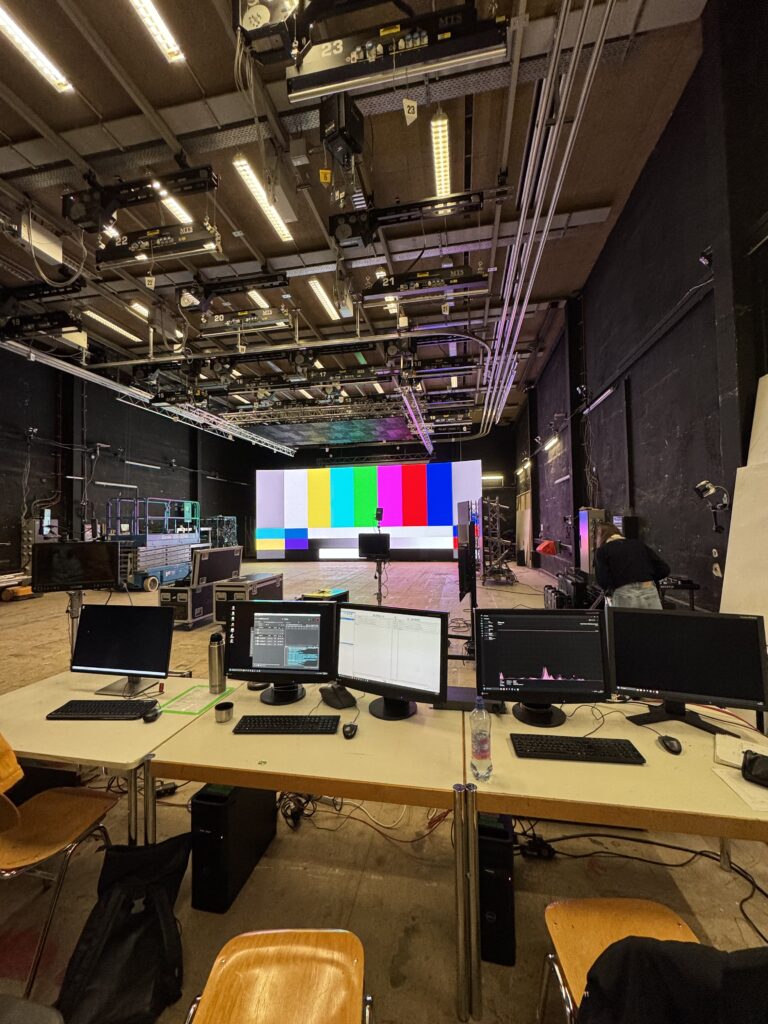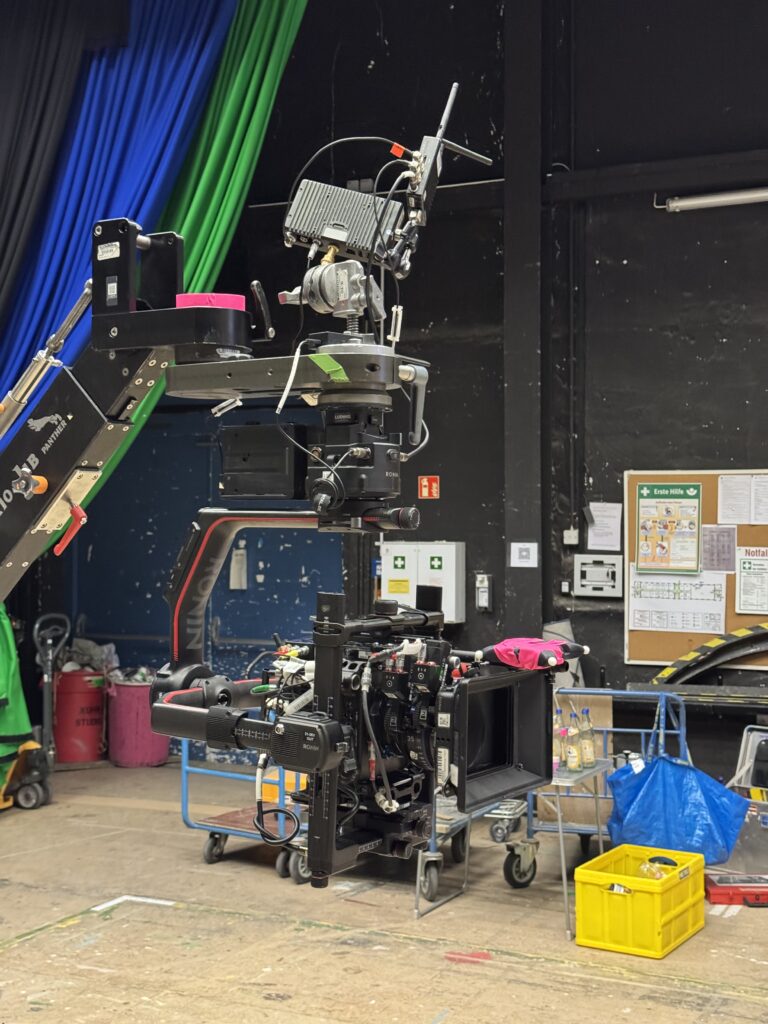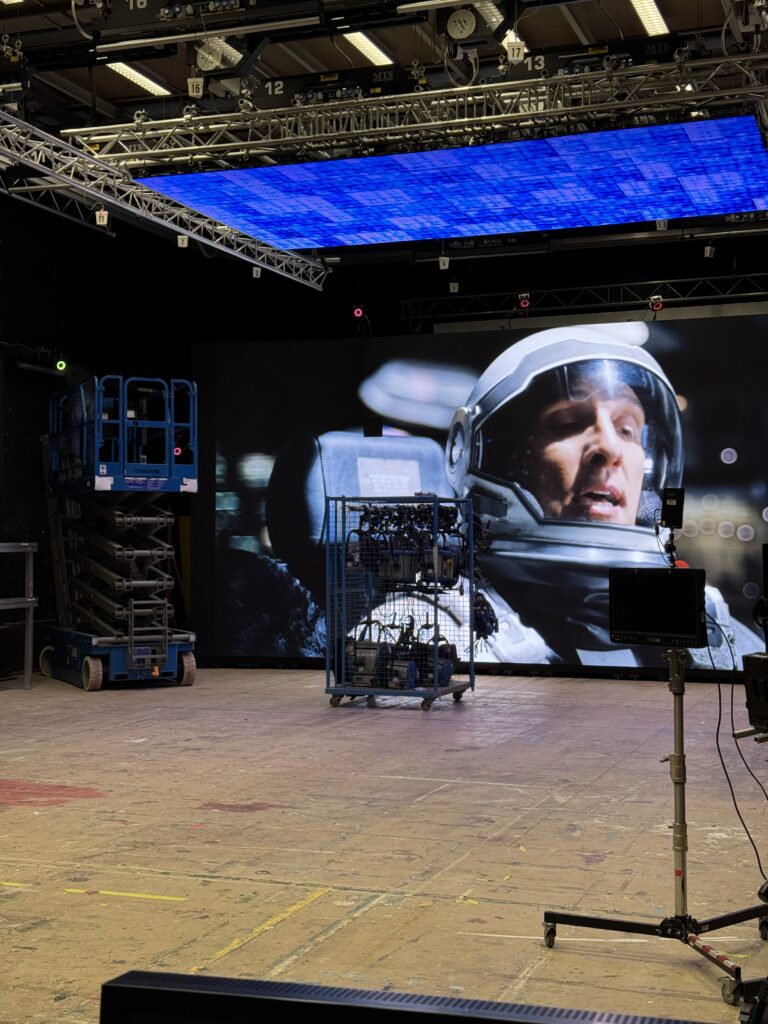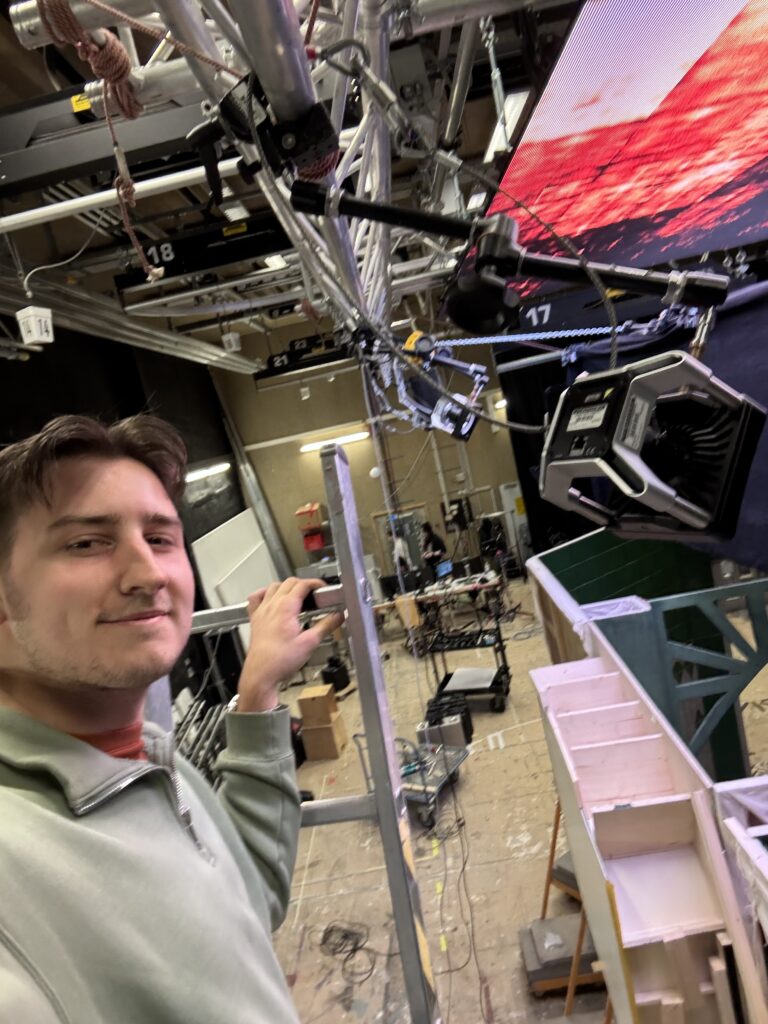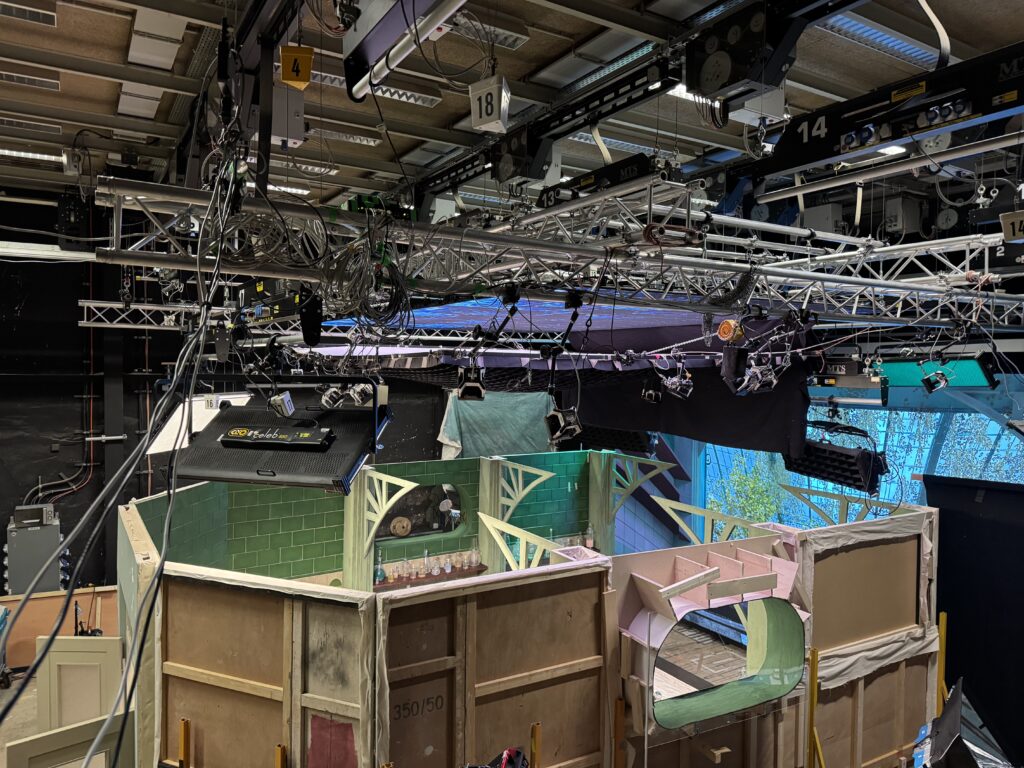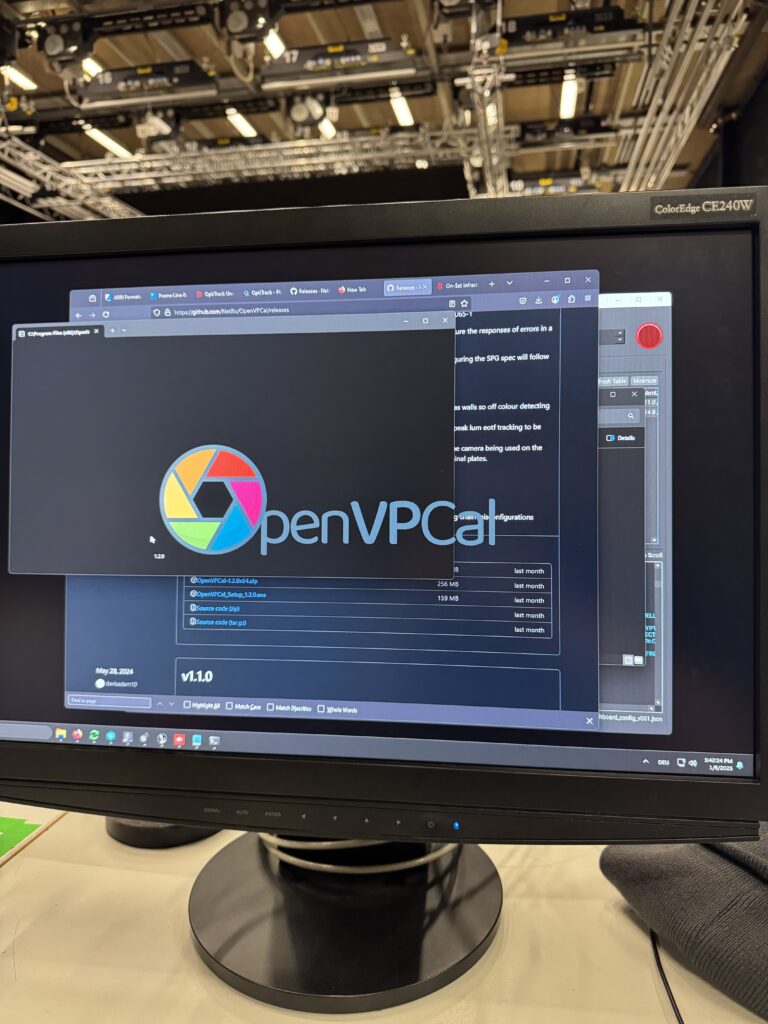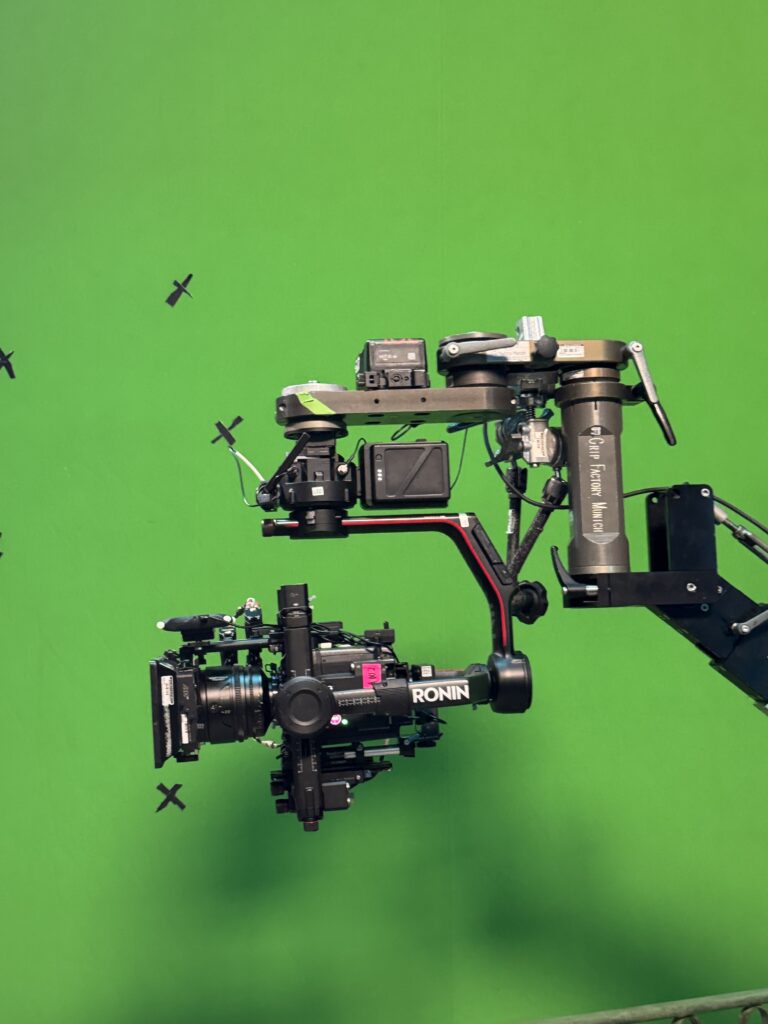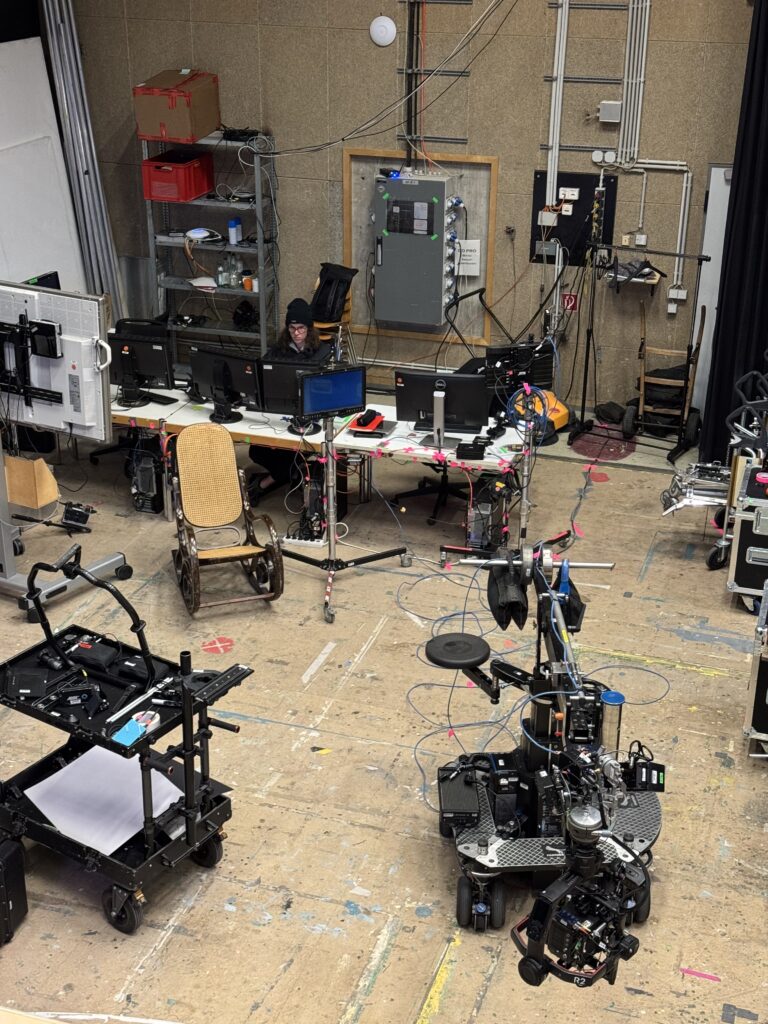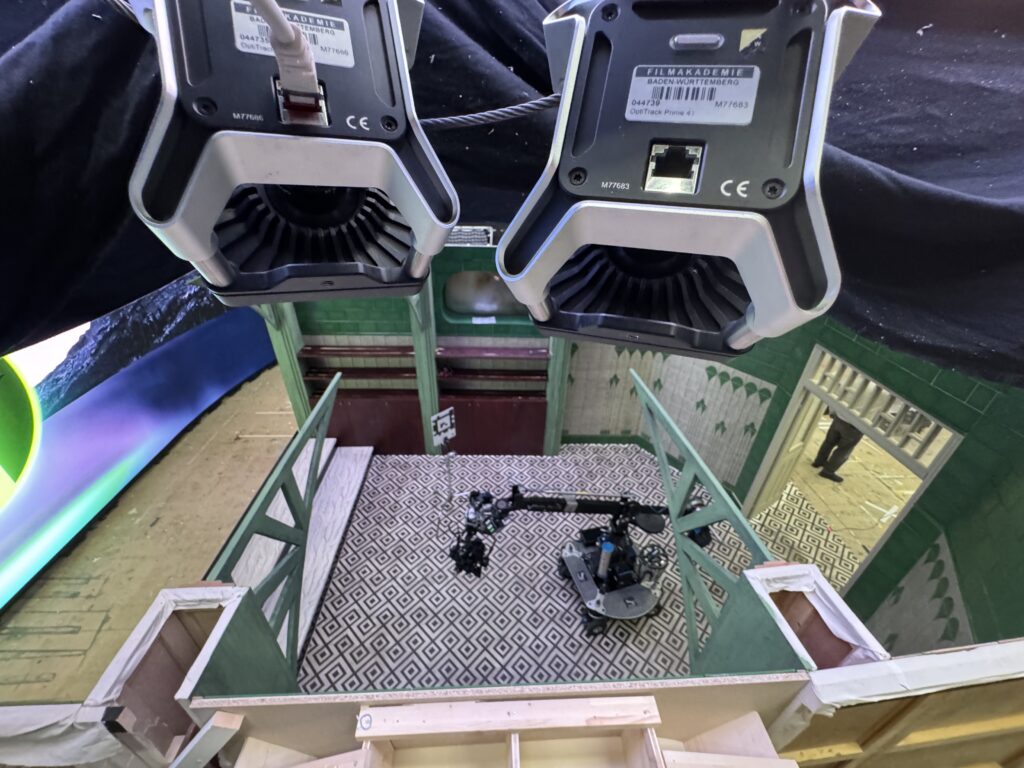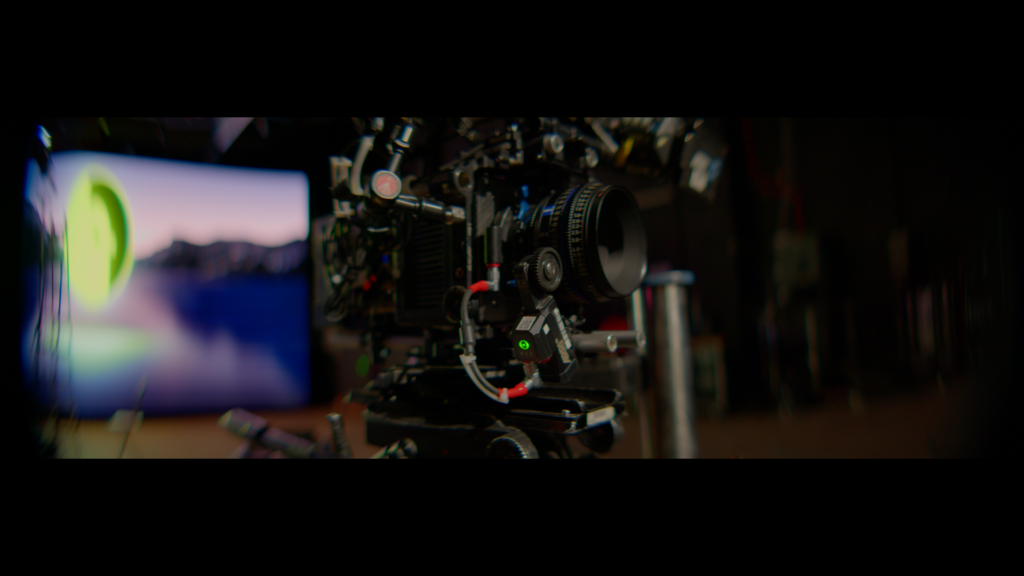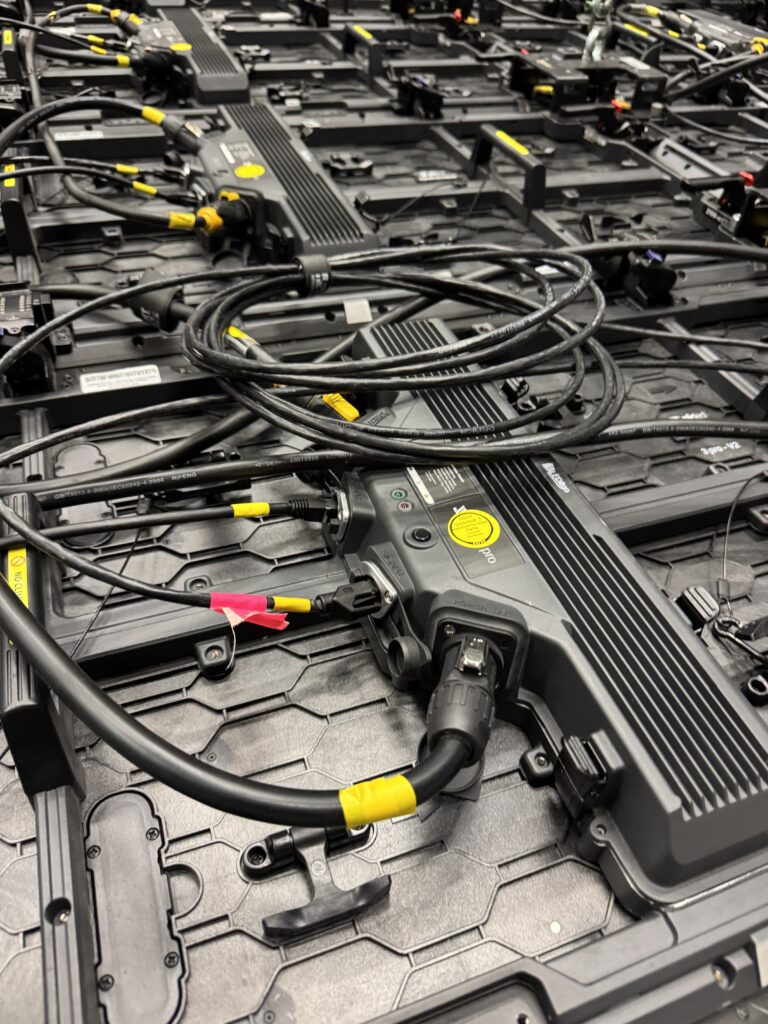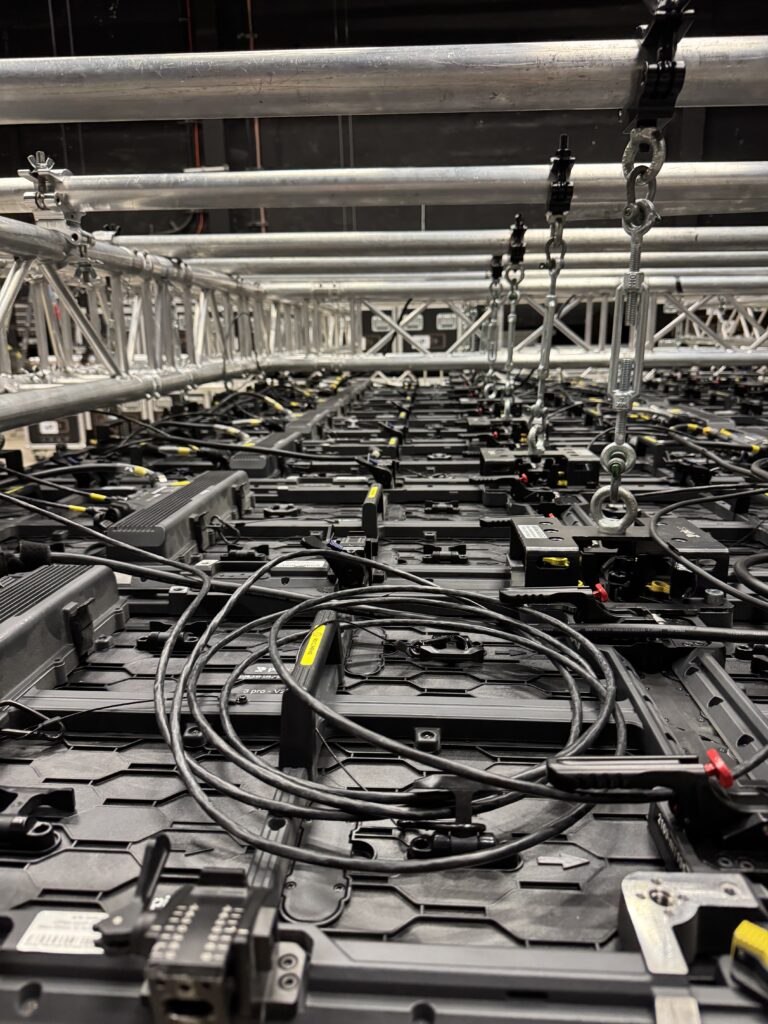
The Virtual Production of „Aurora“
In this project, I had the exciting opportunity to serve as both the Virtual Production Operator and Unreal Engine Artist. I was responsible for managing real-time environments, integrating digital assets, and ensuring seamless interaction between the virtual and physical elements on set. This experience deepened my understanding of cutting-edge VP workflows and strengthened my skills in Unreal Engine.
My Tasks:
- Setup of the LED-Wall with Brompton & Novastar Processors
- Network config
- 10Gbit Network
- 8 Switches
- Setup of Brainbar & Render Nodes
- 4 Brainbar PCs
- 2 UE Artist Workstations
- 1 VP Operator Workstation
- 1 Tracking Workstation
- FreeFilesync
- Genlock & snyc
- 4 Brainbar PCs
- Unreal Engine Configuration
- Managing NDisplay Config & Live Links to have the Virtual VP Stage in the Scene
- Switchboard Setup
- Optimization & Testing of the Scene
- Calibration of the wall
- Perforce
- Tracking / Mocap Setup
- Used Optitrack Primex41 & Zeiss CinCraft Scenario
- Installation & configuration of Optitrack
- mounting of 24 Cameras
- 4 Network Switches
- Build Camera Rig
- Arri Alexa Mini LF
- Teradek transmission to also ingest the signal to the Brainbar and brodcast via NDI
- Optitrack Cinepuck
- Zeiss Cinecraft rig
- Other
- Arri Wall calibration
- Refreshrate double Signal tests
- flicker tracking markers into the signal to have the wall as useful tracking region for the Zeiss Tracking system
- Moiré-effect tests
- Lens Defocus Simulation tests, with live lens-data from the Zeiss Tracker
- Unreal Artist
- Worked on the Environment
- Lighting of the Scene with lights & created light cards
- Created particles system for fish swarms and bubbles
Unreal Engine Scene:

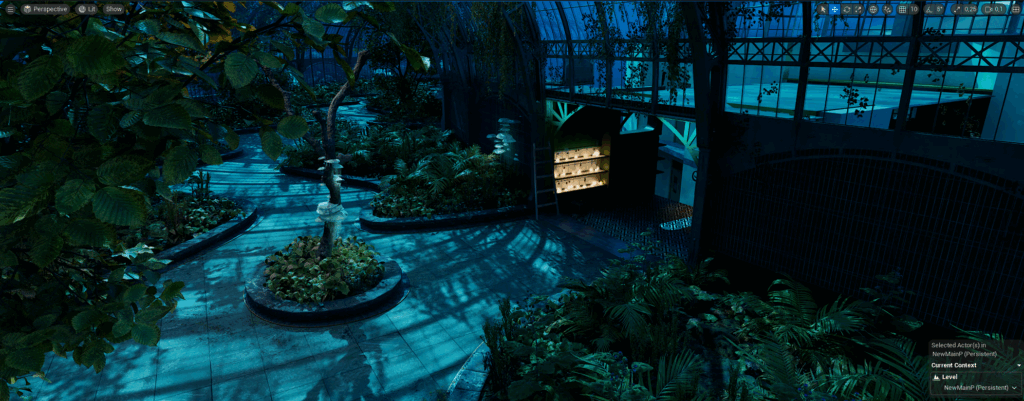
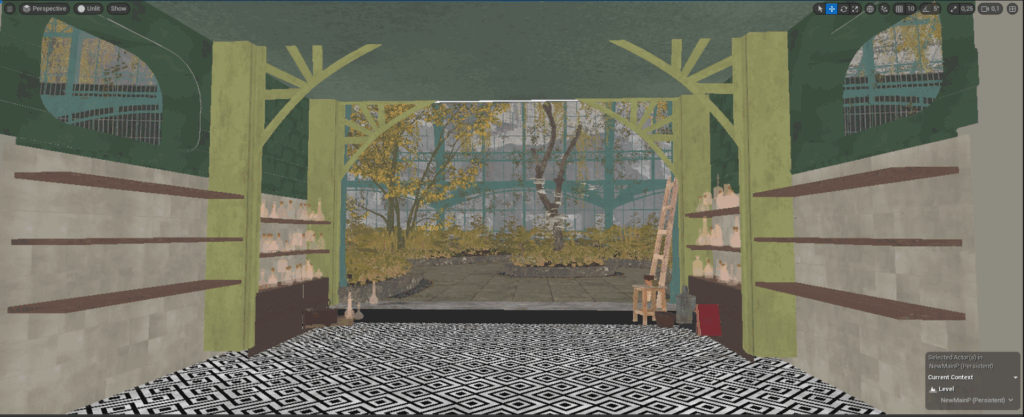
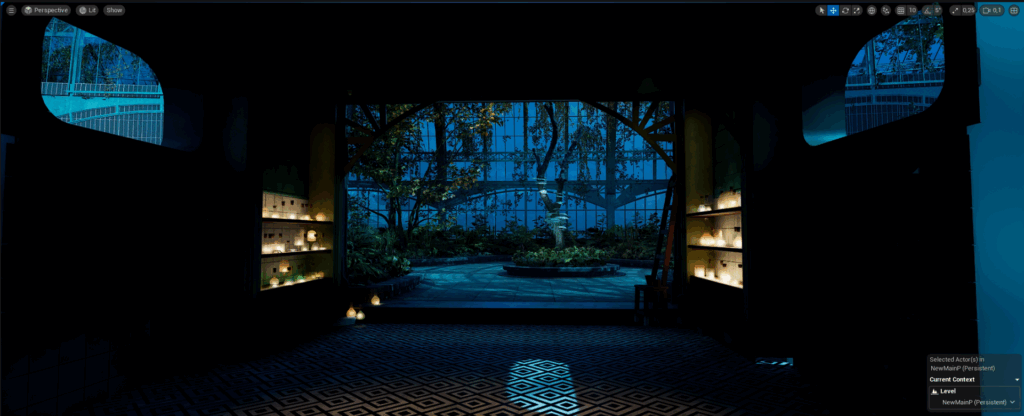
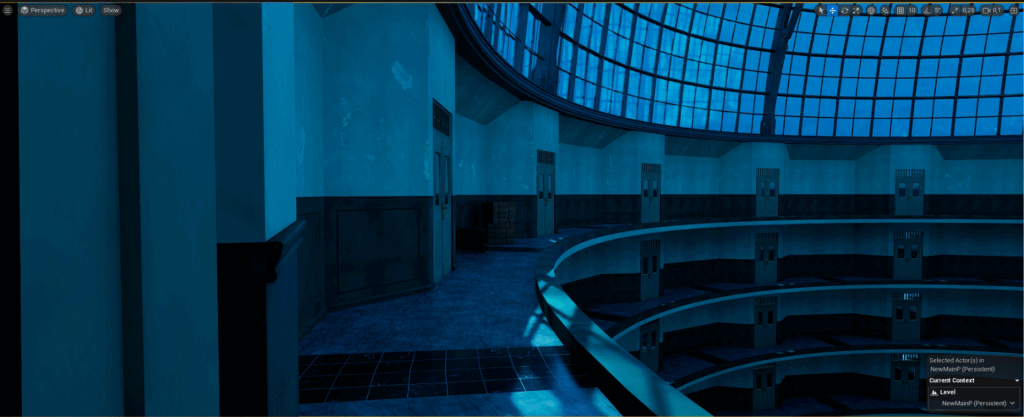

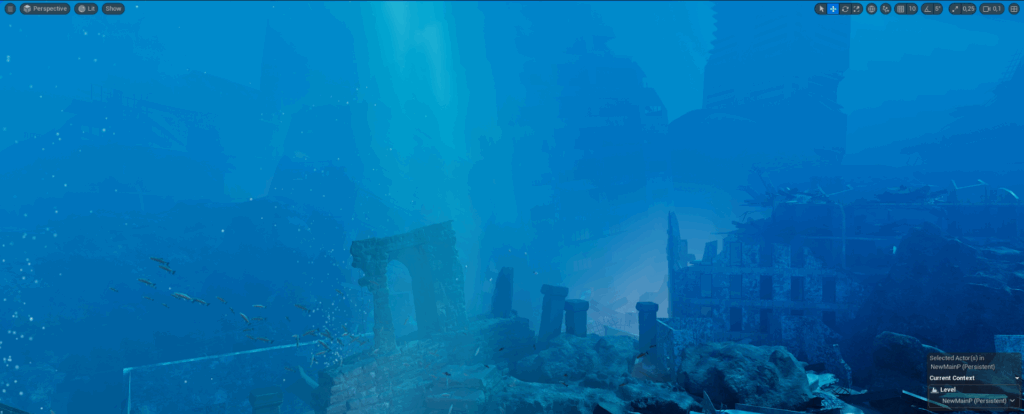
Unreal Stage Config
Split up on 2 render nodes, one node processed the main wall, the second processed the top wall as well as the 2 side panels


Perforce
For the project, we used perforce as version control system

Camera Rig:
I had the opportunity to use both systems, inside out and outside in tracking. For the inside out I had the chance to work with the new Zeiss CinCraft Scenario tracking system, which is a stereo optical tracker with IR. The other system was Optitrack. For the shoot we decided to use Optitrack, since it was a more reliable option for us. More in detail about that soon.

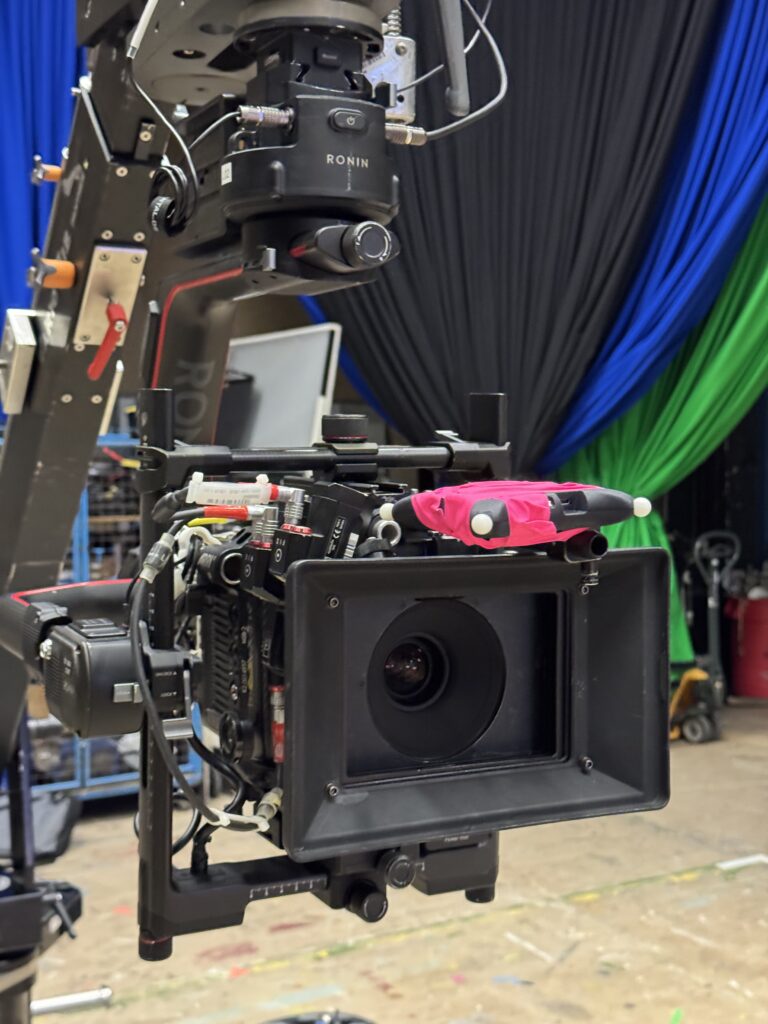
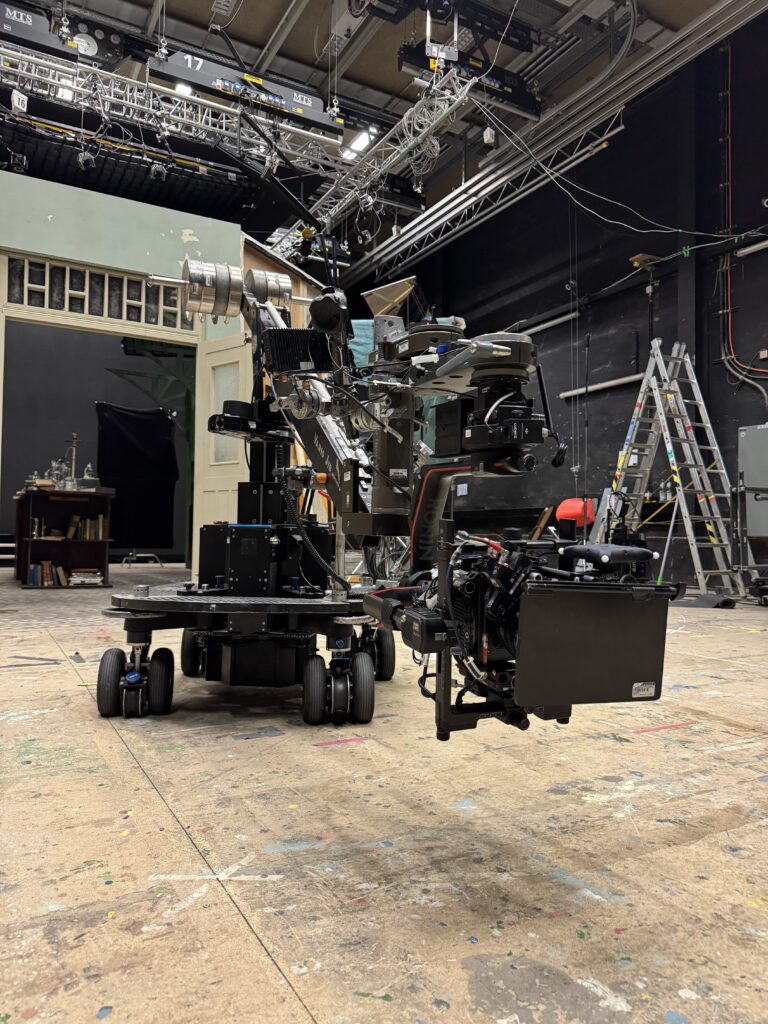
Tracking
24 Optitrack Primex 41 Cameras aswell as the active-puck on the arri rig. With tracking in Motive, the tracking-data then was streamlined through Live-Link to unreal engine. The takes were also recorded to later on use that data for post work.

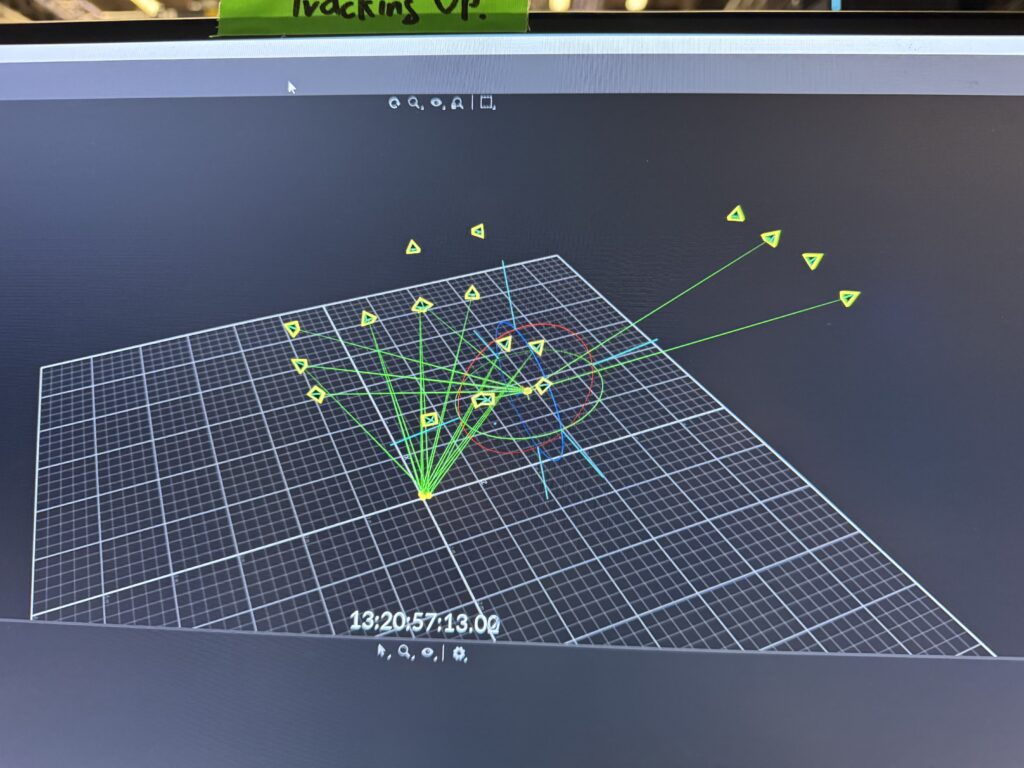

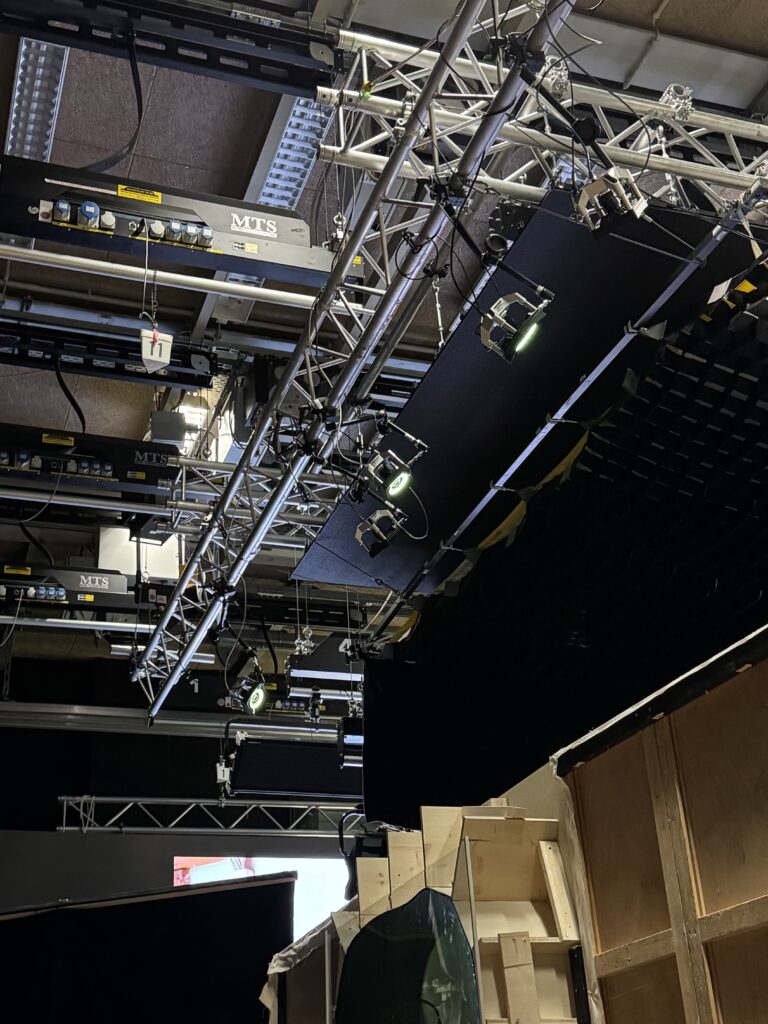

Merging the sets
integration of the physical and digital environments using color correction regions and ARRI calibration for visual consistency. aligned physical and virtual elements, also with lidar scans of the real set and wall, for accurate perspective and balanced lighting for natural interactions.

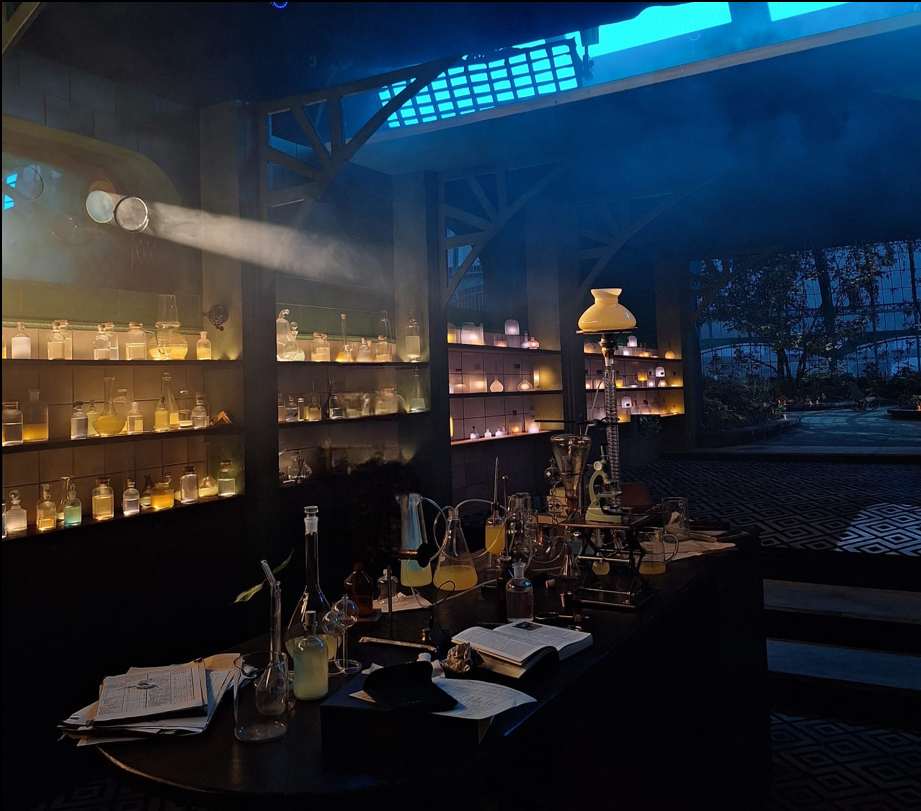

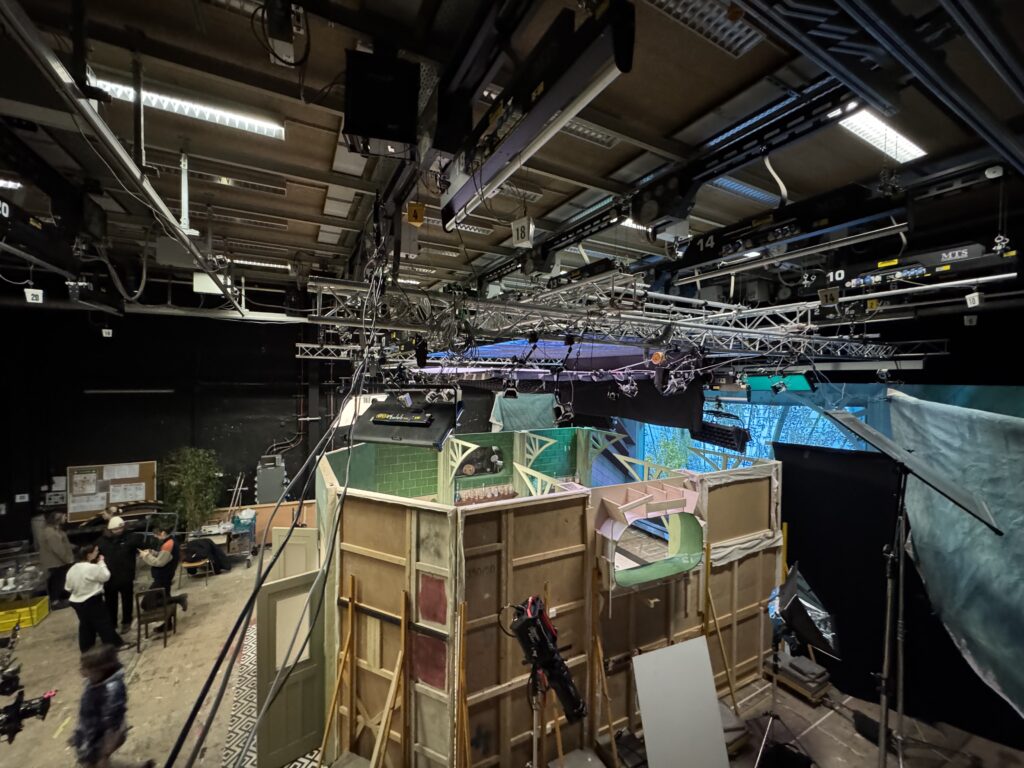
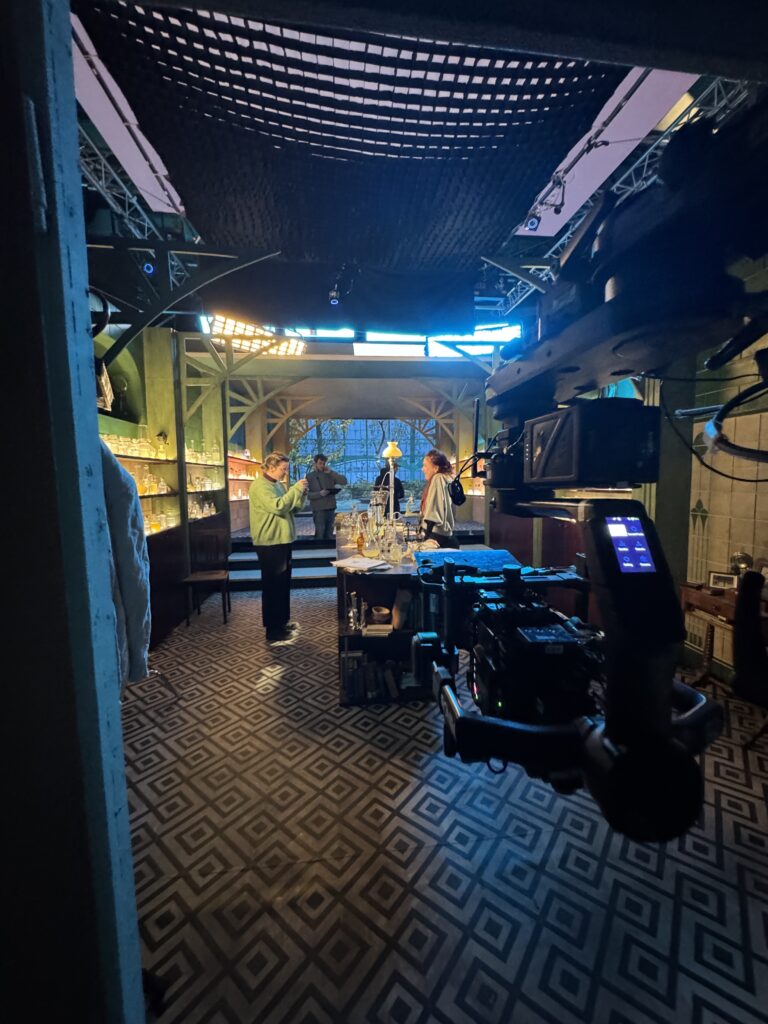

Final Result
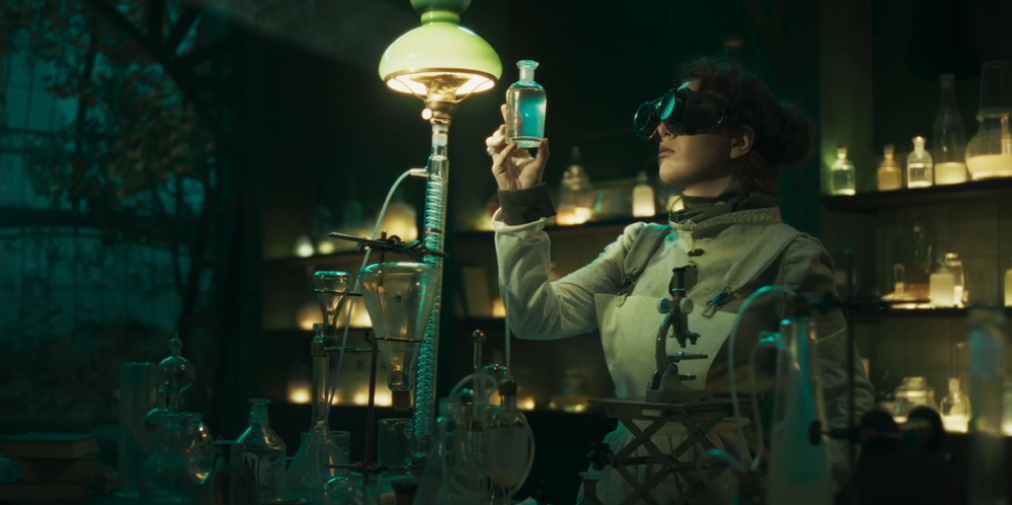

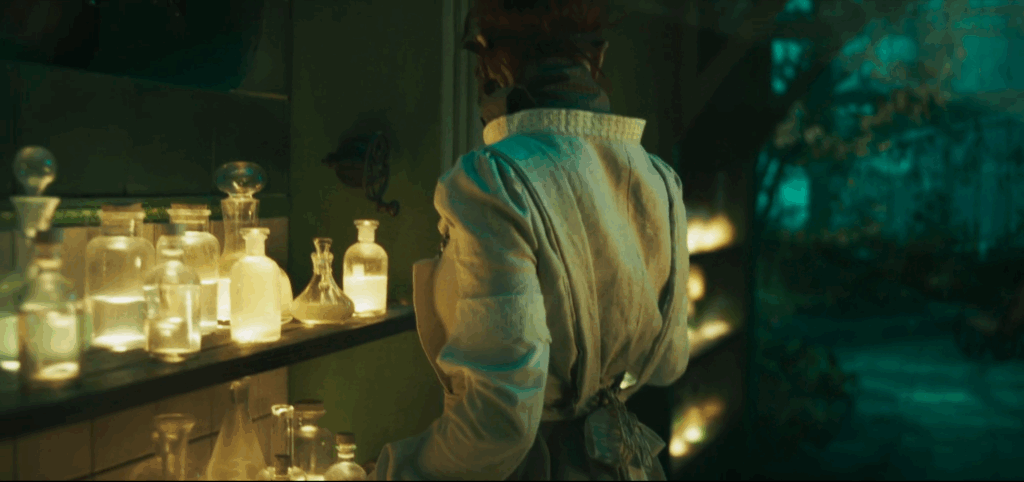

VP-Operation on shoot
One of the main challenges as the VP Operator was maintaining smooth real-time performance on set while adapting quickly to creative and technical changes. Good communication with all departments—especially Unreal artists—was essential to troubleshoot issues fast, implement last-minute adjustments, and keep the production running efficiently. A deep understanding of the technology, scene optimization, and performance monitoring were crucial to support creative decisions and ensure everything worked seamlessly.
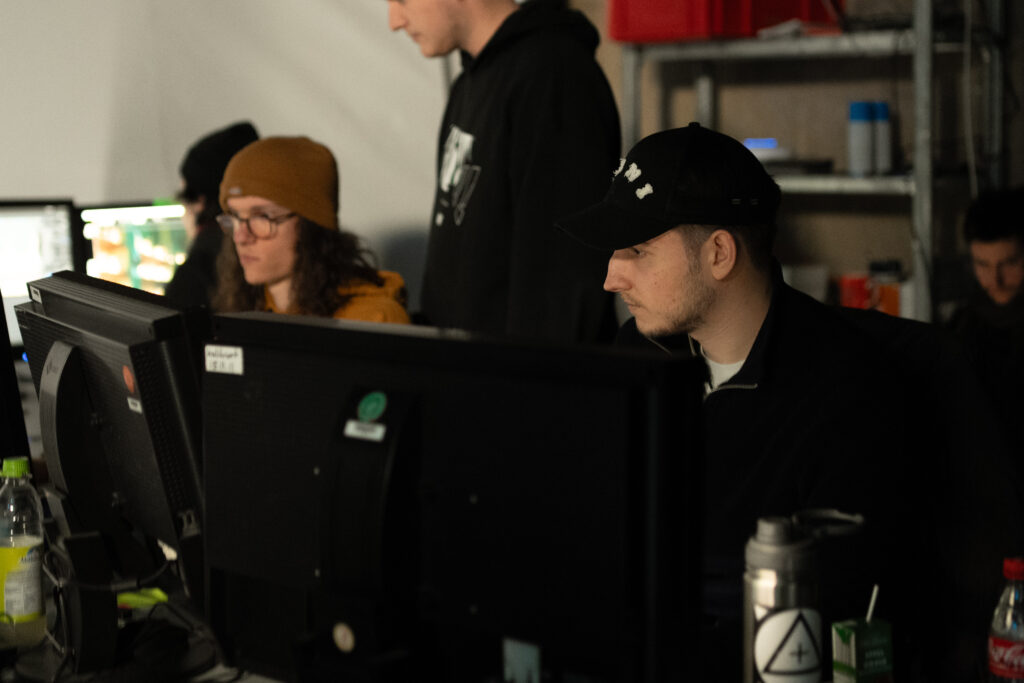

The Wall Setup & Documentation:
Main Wall:
- Size: 8×20 Panels
- 1 Panel: 0.5m
- Resolution: 198×198
- 1x Top & 2x Mobile Panels
Render Nodes:
- 6x DELL Precision 7875 Tower#
- AMD Ryzen Threadripper Pro 7965WX (24-Core)
- Nvidia RTX 5000 Ada Generation
- 128GB RAM
LED Processors:
- Brompton (Main LED Wall Processor)
- Latest-generation LED processor
- Software: Tessera
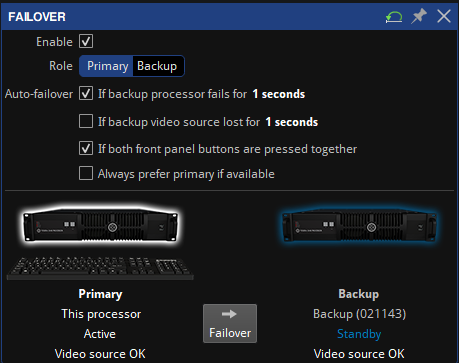
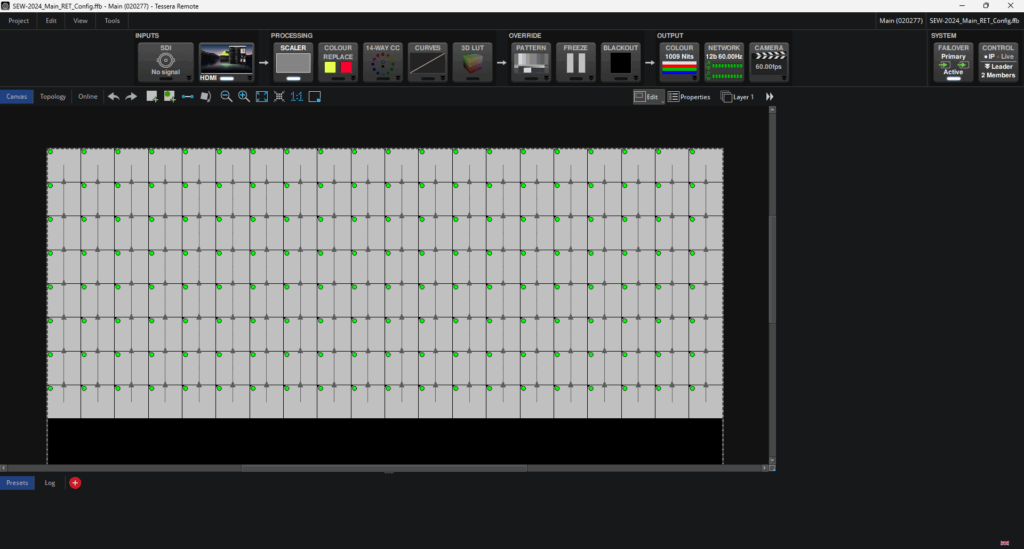

- Hardware: 2 processors (Primary & Backup for failover)
- Nova (Top & Mobile Panels Processor)
- Older-generation LED processor
- they are more cost-effective and lack on features compared to Brompton.
- Software: NovaLCT V5.4.7.1
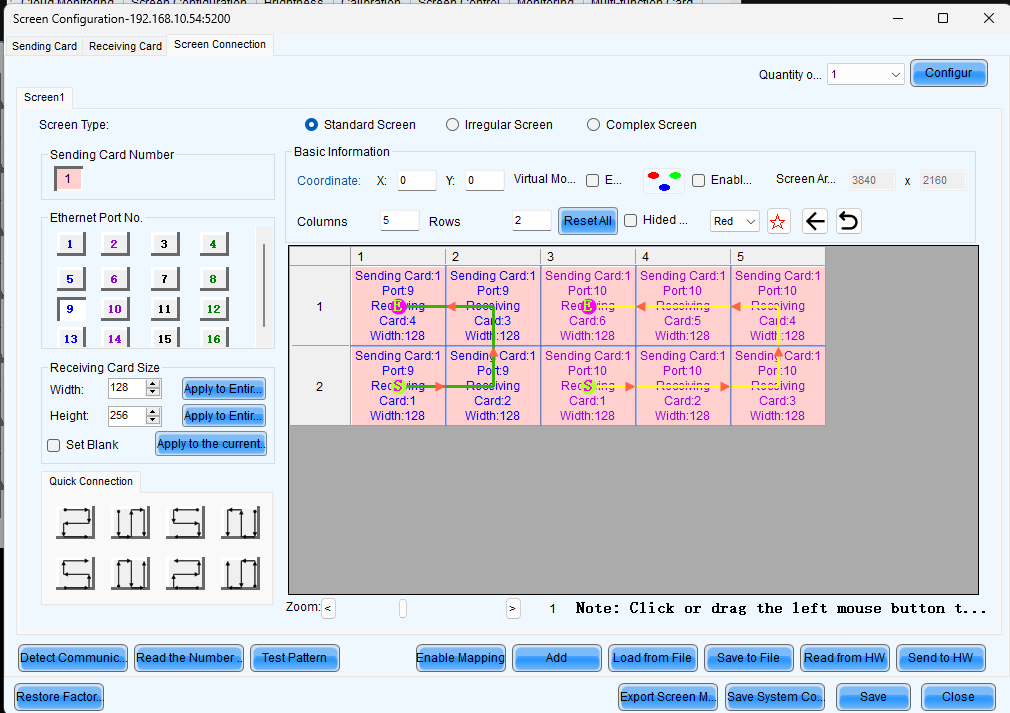
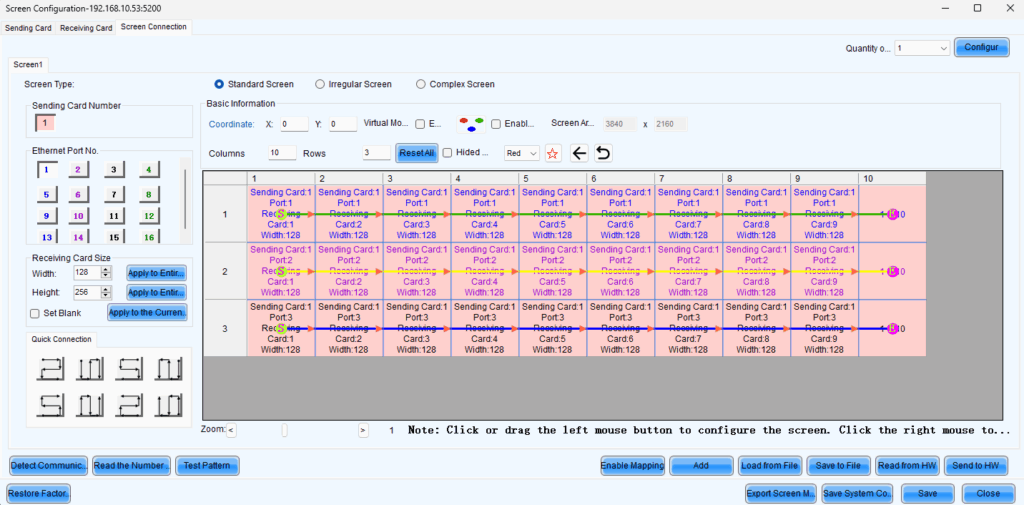
LED Wall Setup:
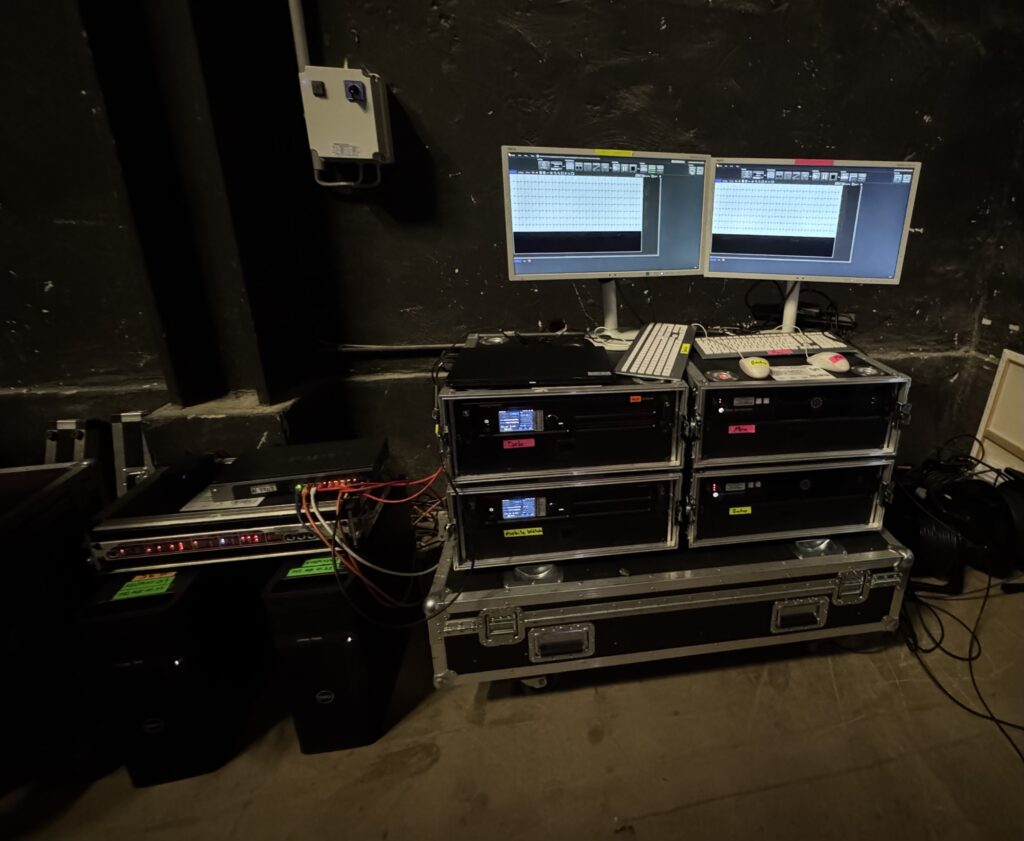
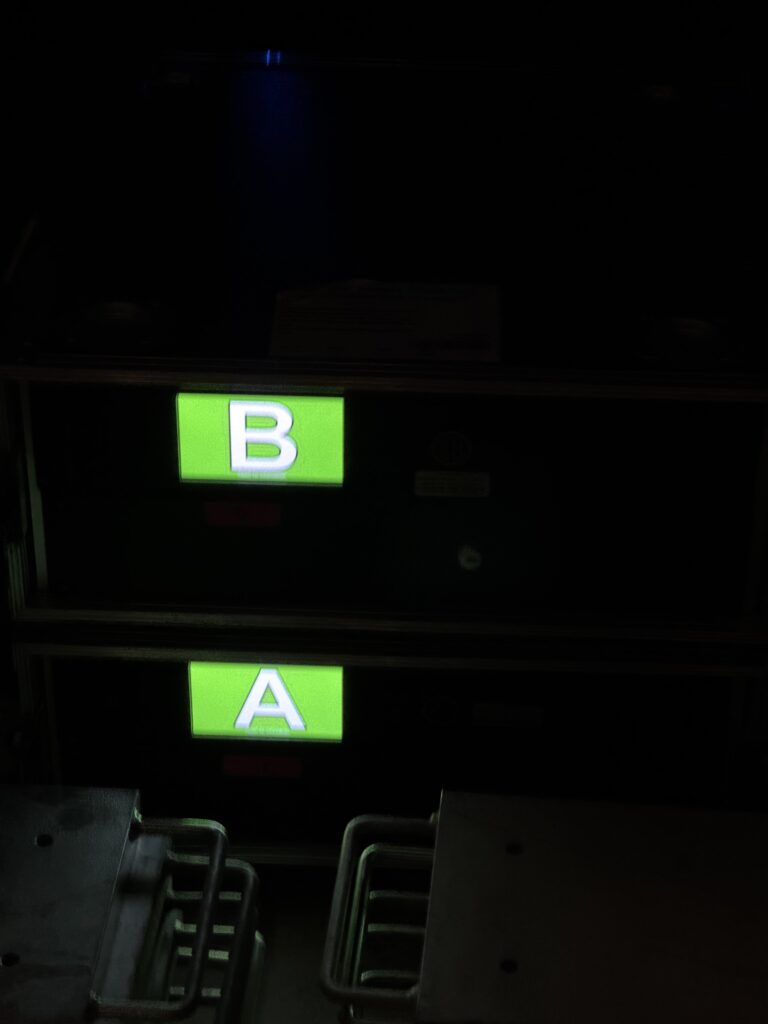
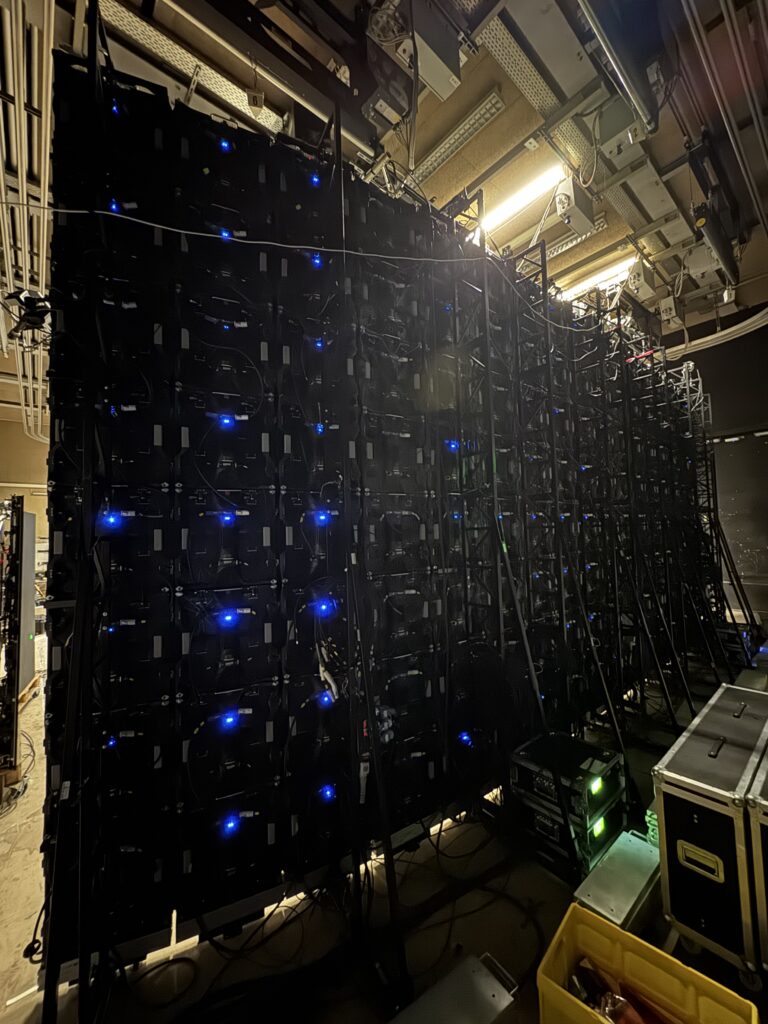
Virtual Production Startup
- Startup Genlock & Syncing
- Ensure Genlock synchronization is active before starting the render nodes.
- Genlock:
- Genlock ensures that all devices like (LED panels, Optitrack, cameras) run on the same timecode reference.
- This prevents frame tearing, flickering, or latency mismatches between the LED wall and the camera sensor.
- Powering On Render Nodes
- Turn on the primary render node first
- Wait at least 50 seconds before switching on the second render node.
- NVIDIA graphics cards use Nvidia Mosaic / NVLink Sync to ensure that all GPUs render frames at the exact same moment.
- If multiple nodes start at once, the sync may fail, causing frame stuttering or desynchronization between LED panels.
- NVIDIA graphics cards use Nvidia Mosaic / NVLink Sync to ensure that all GPUs render frames at the exact same moment.
- If multiple nodes start at once, the sync may fail, causing frame stuttering or desynchronization between LED panels.
3D Print – Optitrack Active-Puck 1/4 adapter
At our shoot, the mounting plate of the active-puck didd break. Big thanks to Tom Tole for already dealing with the problem!Heres the 3d print & blender file: download
Troubleshooting:
- LED Panel Failures
- Indications:
- A red light indicator on the back of a panel means it has failed or lost power/connection
- Fix:
- Unplug and reconnect the blue Power IN cable.
- This restarts the panel and all panels connected above it.
- The Panels are a daisy-chain setup, means that the signal goes from one panels to the next. A failed panel can cut off power to multiple panels above it. Restarting it restores the signal chain.
- If the issue persists, a panel reconfiguration may be required in Tessera or NovaLCT.
- Panel replacement
- Unreal Engine
- If the content of the Wall doesnt update while changing things in the Multiuser session, you may have to check if “Freeze Viewport” is enabled
- Unplug and reconnect the blue Power IN cable.
- Indications:
Panel Configuration & Software
- Tessera (Brompton Processors Software)
- Tessera Remote allows network-based control of Brompton processors.
- Failover Configuration:
- Set up the backup processor to automatically take over in case of failure.
Panel Mapping Setup:
- Assign controllers to specific LED panel sections to ensure accurate signal routing.
NovaLCT (Nova Processors Software)
Software & Download:
- NovaLCT V5.4.7.1 Download
Configuration Steps:- Unlock Advanced Configuration Settings:
- Navigate to USER > Advanced User Settings.
- Enter the password: 666
- Access Hidden Menu for Advanced Debugging:
- Click anywhere in the program and type: 666888
- Assign the Correct IP Address of the Nova Processors.
- It only uses IP-based control to communicate with the processors. If the IP is set incorrectly, the software cannot detect or configure the panels.
- Unlock Advanced Configuration Settings:
Required plugins & helpful ressources
- Netflix Validation Tool
- Netflix OpenVPCal
- Netflix VP Documentation
- OptiTrack Unreal Plugin
- NVIDIA DLSS
- ARRI Alignment Tool
- ARRI Format Guide
- Brompton Tessera Software
Switchboard Debugging Commands
Switchboard is Unreal Engine’s networked control system for multi-user sessions.
Enable/Disable On-Screen Messages:
ENABLEALLSCREENMESSAGES
DISABLEALLSCREENMESSAGESCheck GPU Statistics:
stat gpuCheck Performance Metrics:
stat unitCheck FPS Statistics:
stat fpsnDisplay calibration Pattern:
The calibration pattern is used to adjust the camera offset and prevent double lines
caused by the refresh rate.
add in unreal:
DisplayClusterTestPatternActorotherwise it wont show up
-disable inner frustum
-unfreeze viewports
enable:
nDisplay.Calibration.Pattern TPAGrid * Speed:
scalar:0.3 LineWidth:scalar:0.05disable:
nDisplay.Calibration.Pattern TPAGjhf *Freefilesync:
Shortcuts:
- compare: F5
- sync: F9
Filter List:
- \System Volume Information\
- \$Recycle.Bin\ \RECYCLE?\
- \Recovery\
- *\thumbs.db
- *\DerivedDataCache\
- *\Intermediate\
- *\Saved\
- *\ValidationReports\


